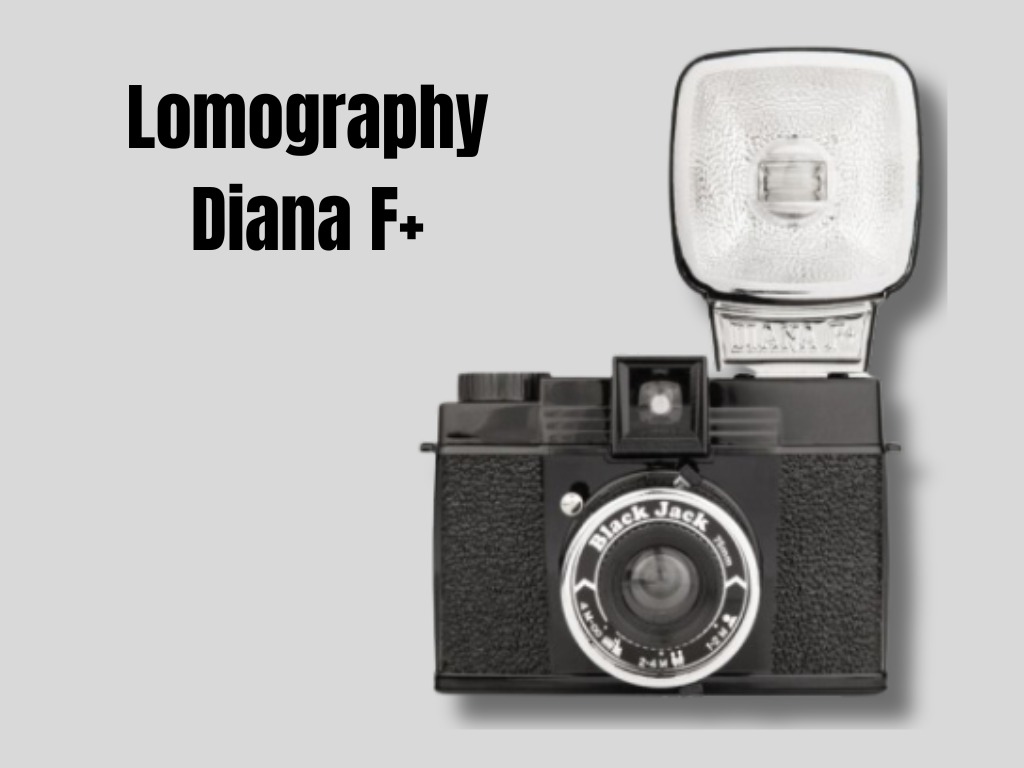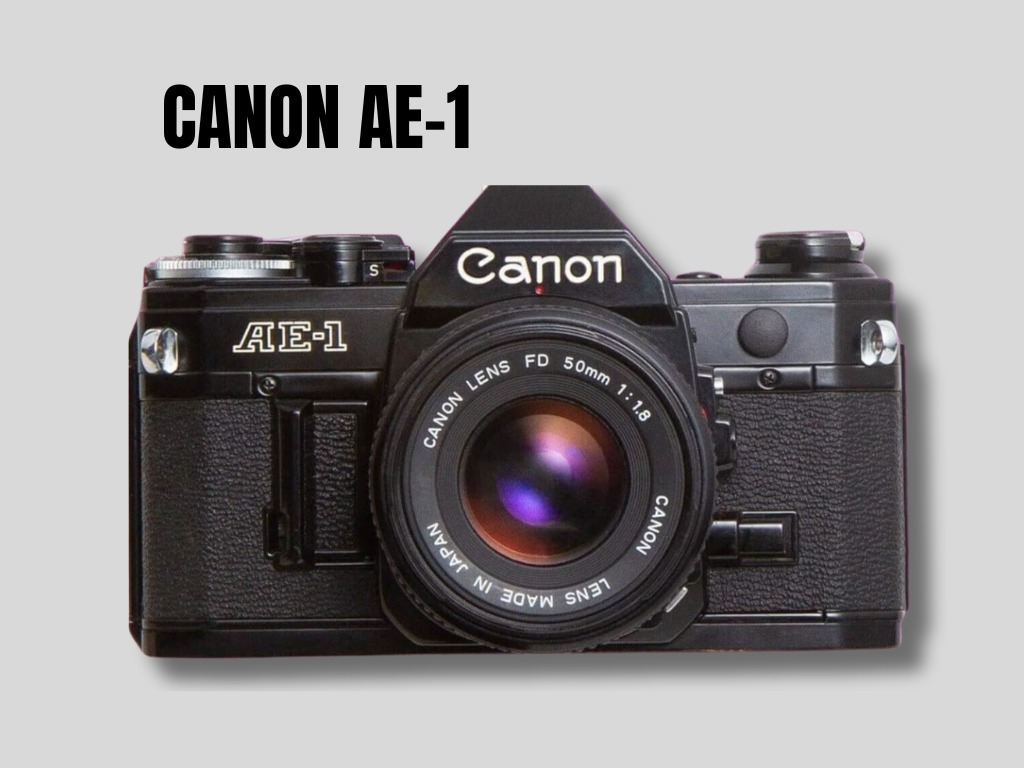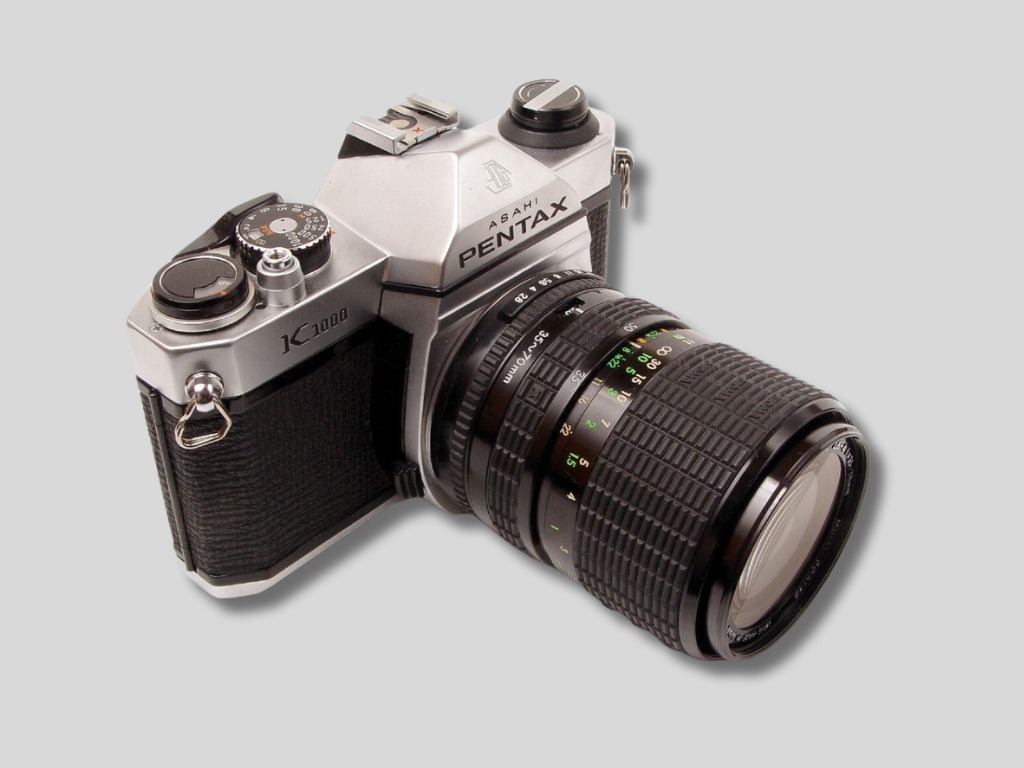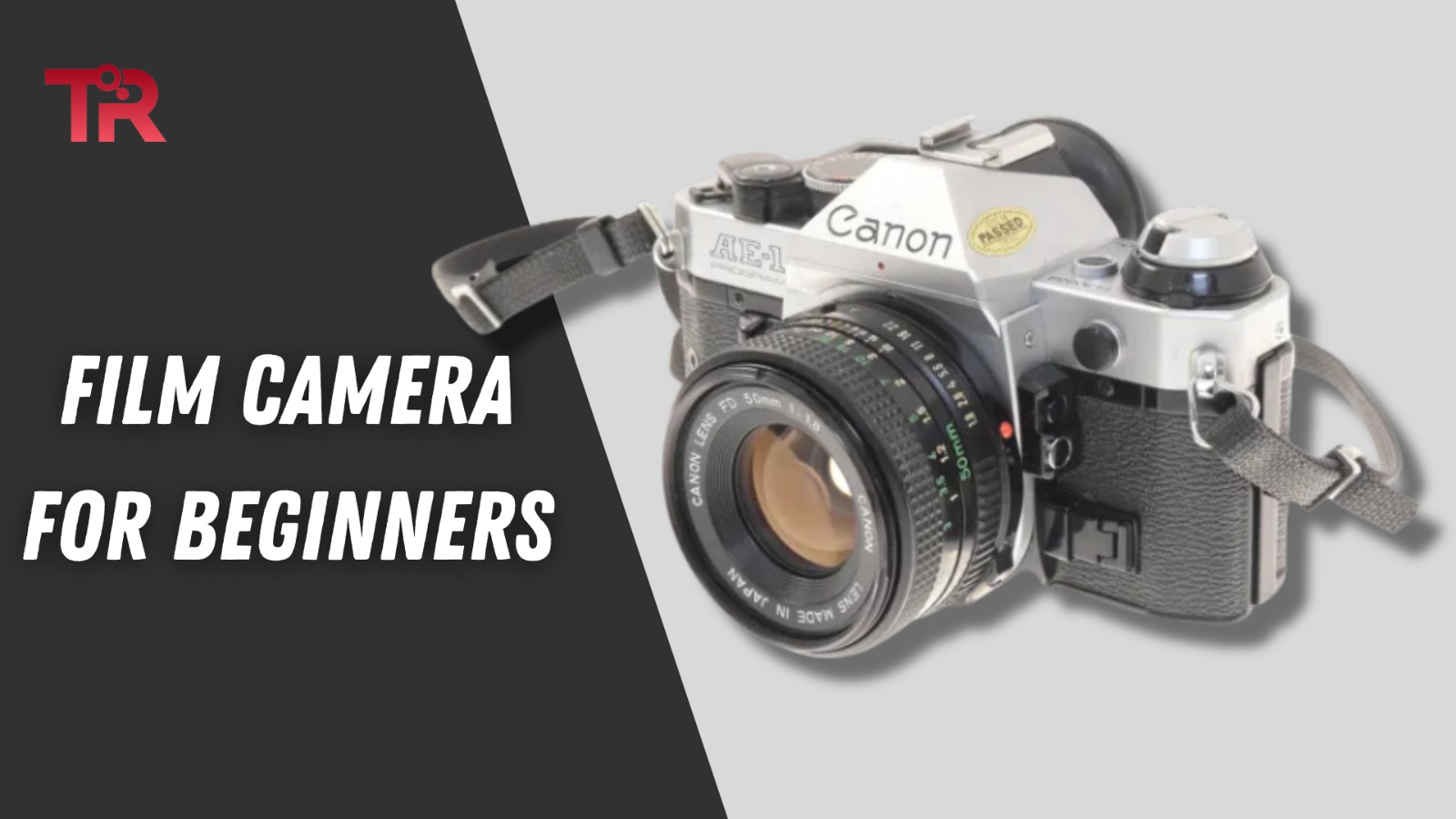Even today, the glamor of film photography continues to captivate. But for newcomers, choosing the right film camera can be a headache. They are usually unaware of their needs because the tons of options available in the market have confused them. Therefore, here is a complete review of the best Film Cameras For Beginners. So, let’s dive into the article to know more about their specs, pros, and cons, and find the best option for you.
Lomography Diana F+
| Brand | Lomography |
| Film Format Type | 120 |
| Item Weight | 220 Grams |
| Item Dimensions (LxWxH) | 7 x 3.25 x 5 inches |
| Included Components | Diana F+ Camera Diana F+ Flash |
| Model Name | Diana F+ |
| Film Color | Colored |
| Exposure Control Type | Manual |
| ASIN | B001690VTO |
| Item Model Number | HP700 |
| Customer Reviews (Rating) | 4.3 out of 5 stars (199 ratings) |
| Amazon Best Sellers Rank | #13 in Medium & Large Format Film Cameras |
| Is Discontinued By Manufacturer | No |
| Date First Available | June 17, 2003 |
Pros
- Uses 120 film
- Can choose image size
- Good for indoor photography
- A lot of features
- Very affordable
- Unique and artistic
Cons
- Plastic build
- Not so durable
- Can not provide sharp and precise images
- No HD quality photos
- Manual film loading can be inconvenient

The Lomography Diana F+ is a modern reinterpretation of the classic Diana camera, which includes an electronic flash that can emit both white and colored light. This camera has a film format of 120, which offers a unique and artistic medium for your photographs. It lets you control the shutter settings for various lighting conditions and achieve unlimited long exposures.
Moreover, you can connect the Diana Flash to the Diana F+ camera through a two-pronged plug adapter. This way, both will work in harmony for a better shoot experience.
It’s indeed a creative tool that encourages experimentation and artistic expression. It is also quite compatible with other hot shoe cameras. Unfortunately, it’s primarily designed for use in the US, so international users may need electrical adapters or converters.
CANON AE-1
| Brand | Canon |
| Model Name | Canon AE-1 |
| Film Format Type | 35mm |
| Item Weight | 2.1 Pounds |
| Item Dimensions (LxWxH) | 4 x 4 x 2 inches |
| Film Color | Black-and-White Colored |
| Compatible Devices | Camera |
| Exposure Control Type | Manual Shutter-speed-priority |
| Min Shutter Speed | 1/1000 seconds |
| Product Dimensions | 4 x 4 x 2 inches |
| ASIN | B00GTX4RCO |
| Item Model Number | AE-1 Program |
| Batteries Required | 1 Lithium Metal batteries required |
| Customer Reviews | 4.2 out of 5 stars (929 ratings) |
| Best Sellers Rank | #16,820 in Electronics (Top 100 in Electronics) |
| Discontinued By Manufacturer | No |
| Date First Available | June 23, 2009 |
| Manufacturer | Canon |
| Mount | FD |
| Film Format | 35mm |
| ISO/ASA | 25-3200 |
| Shutter Speeds | 2 Seconds – 1/1000th of a second |
| Battery | 4LR44 – 6V |
| Exposure | Manual exposure/Shutter Priority |
| Focusing | Manual Focusing |
| Flash | Hotshoe |
| Flash Sync | 1/60 |
| Build | Medium/Strong |
| Ease Of Use | Medium |
| Aesthetics | Okay |
| Chance Of Fault | Medium/High |
| Use Without Battery | No |
Pros
- Outstanding design
- Very versatile (compatible with a lot of lens)
- Captures high-quality images
- Very portable
- Very easy to focus
- Best value for money
Cons
- No automation features
- Not easily available everywhere
- Limited shutter speed
- Not comfortable
- Not compatible with latest lens
- Batteries has to be replaced regularly

The Canon AE-1, an iconic SLR camera featuring a vintage charm with modern precision. Its compact design and light weight body makes it your right photography partner. Its electronically controlled Auto Exposure (AE) system, making it an ideal choice for photographers, allowing them to capture both color and black-and-white films, and open a world of creative possibilities for them.
The camera ensures to give you creative control with its efficient 1/1000-second shutter.
Freeze fast action or explore long exposures for artistic effects. Moreover, the fixed eye-level screen offers a bright and clear view. Furthermore, it even displays all essential information like the aperture scale, a meter needle and battery charge level indicator for pinpoint accuracy and smoother shoot experience.
One more advantage is the AE-1’s compatibility with Canon’s FD, FL, and R lenses, offering creative flexibility. High-quality lenses like the Canon FD 55mm f/1.2 S.S.C and Canon FD 50mm f/1.4 S.S.C ensure sharp and detailed images. However, the only drawback is it is more suitable for US users, and foreign buyers have to invest in an adapter to capture your favorite moments without the chaos of low battery charging.
PENTAX K1000
| Brand | Pentax |
| Model Name | K1000 |
| Item Weight | 1.65 Pounds |
| Item Dimensions (LxWxH) | 7 x 4 x 4 inches |
| Film Color | Black and white Color |
| Compatible Devices | Camera |
| Exposure Control Type | Manual |
| Min Shutter Speed | 1/1000 seconds |
| Max Shutter Speed | 1 |
| ASIN | B001AO4JRK |
| Batteries Required | 1 LR44 battery |
| Customer Reviews | 4.0 out of 5 stars (447 ratings) |
| Best Sellers Rank | #42,161 in Electronics |
| #4 in SLR Film Cameras | |
| Date First Available | June 3, 2008 |
| Exposure Control | Manual |
| Shutter Speeds | Mechanical 1/1000 sec to 1 second, plus bulb |
| Exposure Metering | Center-weighted |
| Battery | 2x 1.55V SR44 / 1.5V LR44 batteries |
| Camera Type | 35mm film SLR |
| Lens Mount | Pentax K |
Pros
- Fully mechanical
- Very reliable
- Budget-friendly option
- Compatible with a lot of lens
- Amazing build quality
Cons
- No automation features
- The maximum shutter speed is comparatively low
- Only 1/60 second flash sync
- Focusing is not easy
- Does not provide exposure control with most lens

The Pentax K1000 is one of the most renowned efficient and popular film photography camera that is widely acclaimed by both professionals and novice to capture high quality images and videos. Although its mechanism doesn’t require a battery to operate, but for the light meter, you’ll need to add a A76 cell battery. Unlike many other SLR and DSLR cameras, the K1000 is incredibly straightforward and has a minimal learning curve, featuring only three primary controls: aperture, shutter speed, and focus. Moreover, you can set the film speed according to your need
The simple design and interface of the camera encourages photographers to focus on their work rather than their equipment, making it a top choice among photography teachers and instructors. Another remarkable feature of the K1000 is that both the light meter and camera are always on, ensuring instant picture-taking. However, unfortunately, this product is designed for US residents only and may require an adapter or converter for international use.
Key Criteria for Choosing a Film Camera for Beginners
Several essential factors come into play to ensure you make an informed choice while choosing a film camera. This criterion encompasses considerations related to budget, format, functionality, build, and additional features. All of these collectively define the best film camera to match your preferences and creative goals at the beginner level.
Budget
Minimum: $50 – $100 (basic, used 35mm camera).
Maximum: $500 – $1,000 (modern or high-quality vintage 35mm camera).
Film Format
Minimum: 35mm (affordable and easy to use).
Maximum: Medium format (ranging from hundreds to thousands of dollars).
Manual vs. Automatic
Minimum: Manual controls (for learning).
Maximum: Both manual and automatic controls (versatility).
Ease of Use
Minimum: Point-and-shoot 35mm camera.
Maximum: 35mm SLR with interchangeable lenses.
Lenses
Minimum: Fixed lens.
Maximum: 35mm SLR with various compatible lenses.
Build Quality
Minimum: Good working condition (for vintage models).
Maximum: Durable, reputable brand.
Size and Weight
Minimum: Compact and lightweight.
Maximum: Larger models (if portability is not a concern).
Metering System
Minimum: Built-in light meter (basic control).
Maximum: Advanced TTL metering (precision).
Viewfinder
Minimum: Clear, basic viewfinder.
Maximum: Bright pentaprism or pentamirror viewfinder.
Accessories
Minimum: Basic accessories (flash, tripod).
Maximum: Wide range of compatible accessories.
Maintenance and Repairs
Minimum: Check camera condition.
Maximum: Access to repair services and parts.
Film Availability
Minimum: Common film types locally.
Maximum: Support for various film types.
Brand Reputation
Minimum: Well-known brands (Canon, Nikon).
Maximum: Established manufacturers in film photography.
Sample Images and Reviews
Minimum: Online reviews and sample images.
Maximum: Extensive research, expert recommendations.
Extras
Additional advanced features to consider:
- Bulb mode for long exposures.
- Built-in light painting or light trails mode.
- Interchangeable viewfinders for different shooting styles.
- Compatibility with motor drives for rapid shooting.
- Motorized film advance for quicker and more efficient film loading.
- Built-in or attachable motorized winding for advancing to the next frame.
- Spot metering for precise exposure control.
- TTL (Through-the-Lens) flash metering for better flash photography.
- Integrated motorized zoom lens (for some point-and-shoot cameras).
- Special shooting modes like panorama or panoramic masks.
- Support for various film backs (e.g., 120 and 220 film backs for medium format cameras).
- Weather-sealed or rugged construction for outdoor or adverse conditions.
- Support for specialized film formats like instant film (e.g., Polaroid or Fujifilm Instax).
Bottom line
Although film photography is indeed a fun activity, but for beginners, choosing the right camera can be puzzling. Therefore, this review article simplifies the process by providing you the insight of Lomography Diana F+, Canon AE-1, and Pentax K1000, each offering unique strengths and simplicity tailored for newcomers. Their potential specifications and the pros and cons will surely help you make a confident choice. So, we hope you’ll begin your journey into film photography with the perfect camera that aligns with your vision and style.

